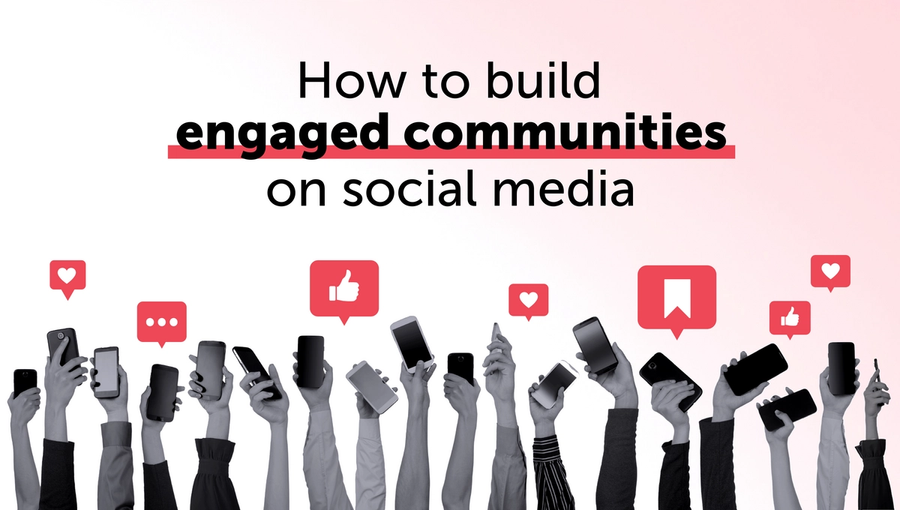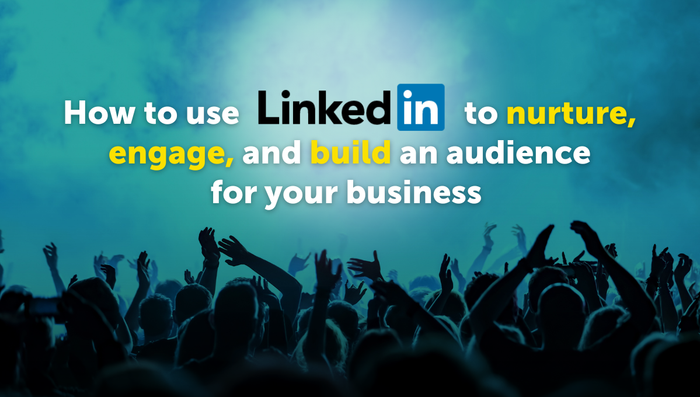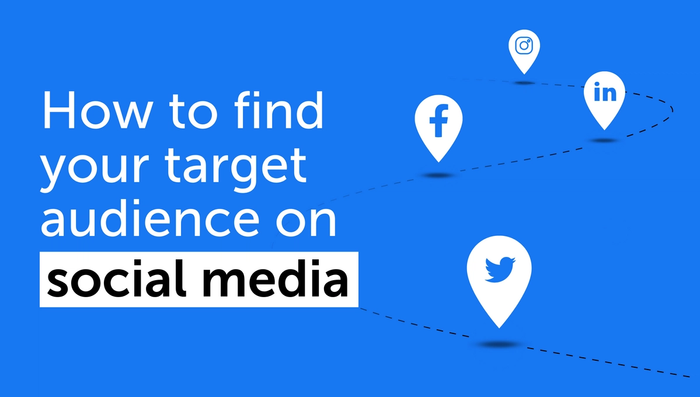Social Media
How to build engaged communities on social media
Before we start, ask yourself an honest question. Are you genuinely interested in building an engaged community, or do you just want sales leads?
When people say ‘engaged community’ they often mean ‘prospect pool’.They mean a group of people ready to buy, who’ll convert with just a little nudge. Nobody wants to join a ‘community’ just to be sold to. If you treat them like that, they’ll neither engage nor convert.
Of course, the ultimate point is to sell — you’re running a business — but social media is a tool for long-term strategies, and a community is about nurturing prospects, not closing them. It’s about establishing yourself and your brand as leaders, thinkers, and experts.
An engaged social media community consists of existing customers, who can advocate your work and prove your value, buyers who are searching for a partner to solve their problems, and prospects who don’t yet realise they need help.
Here’s how you can share content your audience will want to read, watch, and hear at all stages of the customer journey, so that you build a lasting profile and a sustainable pipeline in your target market.
Storytelling
You’ll have heard many times that people buy emotionally and justify intellectually, and it’s true. Nothing taps into our emotions like a story. The chemistry behind that is all to do with oxytocin, the hormone that, among many things, encourages trust and cooperation. A good character-driven narrative encourages oxytocin synthesis. That means, in a nutshell, that if you tell your prospects a good story, they’re more likely to trust you. If they’re more likely to trust you, they’re more likely to buy from you.
You have a great story already. You founded a business, which means your narrative already has a main character, bravery, risk, success against the odds, and failure (don’t be shy about that last one). The important thing that you’ll communicate is what kind of person you are. Prospects who are the right fit for your offering will gravitate to that.
Your stories don’t have to be grand narratives about how you overcame adversity. They can be smaller insights into your working day, your activities, or your team. The point is to show who you are and what you stand for, building a brand by showing the faces behind the logo. Those are the things that will make prospects choose you over your competitors.
Offer Value
The difficult balance to be aware of is in the focus of your social media output. Stories are incredibly powerful, but you should avoid over-use. At the core of your social media, and all of your marketing, should be your prospect. If your output is all about you, it can get very boring very quickly.
Everyone is excited to share their expertise, the skills of their team, and the innovation of their solution, but to borrow a piece of wisdom from storytelling — show, don’t tell.
Show your prospects that:
- You know their industry
- You know their problems
- You know how they feel
Chris Voss, the former FBI lead negotiator, states that the turning point in any persuasive interaction is when your partner says, ‘That’s right’. It’s the point at which they feel heard, listened to, and understood, and it’s when they start to feel truly collaborative and attentive. An understanding of your audience has to be the starting point, because offering value has exactly the same goal as storytelling — earning trust.
If a prospect sees you perfectly describe the pain they experience in their working life, they can’t help but pay attention. Then, when you then state accurately how they feel about that problem, and explain why the problem exists, they’ll have to conclude that you know what you’re talking about.
You can do that through all kinds of content — videos, infographics, guides, polls, articles, or straightforward text posts. Choose the medium that’s the best method of communicating what you have to say, and that’s the best fit for the social media of your choice.
On that point, it’s obviously no good sharing incredible insight if nobody sees it, so go where your prospects are. It’s easy to get distracted by a shiny new platform, but that platform is a complete waste of your time, effort, and budget if your future customers don’t use it.
Communication
‘Engagement’, as a social media metric, counts clicks, ‘likes’, and comments. It’s worth peeling that back and remembering what those actions are meant to represent, which is ‘engagement’ as a state of mind — focused attention, or a desire to interact. Engagement metrics are useful but imperfect representations of that.
Think of a stage performance. It engages an audience for exactly as long as it lasts. People can remember it for a long time afterwards, but the engagement stops at the end of the show. With social media, if a post is a play, then ‘likes’ are the applause before the audience shuffles out of the theatre.
You can get far more out of one piece of content, and make your time, effort, and budget go further if you maintain a conversation around it. The work isn’t finished when you click the ‘post’ button.
Trust your insight
If you’ve shared something truly insightful, maybe even slightly controversial, you’re going to get comments on it, whether they’re dissenting, agreeing, expressing gratitude, or asking questions. Each of those is an opportunity for a conversation, which engages your followers more, and can grow the community by engaging those who don’t know you yet.
It’s worth mentioning that one reason a great post might not get that engagement is an algorithm. Since platforms like Twitter and LinkedIn decide what users see on their feed through their own algorithms, your post might not reach all of the people you want it to. However, you can make sure that key people see your content by tagging them. That also shows those involved that you thought about them specifically, which is always gratifying.
Finally, don’t forget the other side of the coin, which is to engage with others’ posts. When you find posts that you can add value to, do it. If you have a perspective that would be interesting to the author, or your fellow readers, that’s another touchpoint to inspire interest in your ideas, and grow your community.
Bringing everyone together
People love to gather with those with common interests — that’s the work of oxytocin again. Once you’ve built your following, you can create somewhere for that community to ‘meet’ —for example, a LinkedIn group.
Having set up a group, you are the ‘admin’ of the community (which also implies some authority on the subject, not just the group). You decide who’s allowed in, the rules of engagement, and the general character of the community.
The best way to grow the group, and continue your community-building, is to invite people to join. Because you’ve shared your expertise before, and had plenty of people engage with you, you know who is interested, who has something to contribute, and who will be an asset. If they’ve found your thoughts and insights useful (of course they have), they’ll be very pleased to learn the group exists, and perhaps even flattered that you thought of them.
Now you have a community meeting place, it’s easier to make sure that relevant people will hear what you have to say.The group then becomes a beacon for the subject, attracting yet more people who need or want guidance on the topic. Keep nourishing that community, and your reputation, brand, and (yes)pipeline, will only grow.
If you want to know how to create content that your audience will engage with, or you need help managing your social media and maintaining conversations with your prospects, Nutcracker is here to help. Give us a call on 020 3941 0305, or email hello@nutcrackeragency.com.
Author Bio
Charles Scherer, Content Lead at Nutcracker Agency
Charles Scherer is the Content Lead at Nutcracker Agency, a B2B marketing firm with offices in Ipswich and London. With years of experience crafting compelling narratives for B2B brands, Charles specialises in creating content that not only tells a great story but also delivers measurable business outcomes.
His expertise lies in bridging the gap between creative public relations strategies and tangible results, helping brands secure valuable media coverage and build topical authority online. Charles's work demonstrates a deep understanding of what makes a brand's story resonate with both journalists and target audiences, making him a trusted voice in the field of B2B content and PR
Share this:





